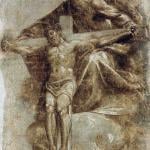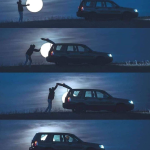Every now and then I like to write a post on economics and I figured I’d post one today, since I usually take Tuesdays off. I’m reading through Money Mischief and have really enjoyed it so far.
Chapter 1: The Island of Stone Money
Milton Friedman opens his book Money Mischief with the story about the island of Yap.  In summary, this island of about five thousand people used a stone for their medium of exchange and called it fei, hence the title of the first chapter The Island of Stone Money. What was so intriguing is that these giant limestone rocks weren’t passed around like today’s dollars, but were exchanged on simple acknowledgment of ownership. The stones would literally remain in the backyard of a person, but would be owned and used for bartering by its new owner, who might have lived on the other side of the island.
In summary, this island of about five thousand people used a stone for their medium of exchange and called it fei, hence the title of the first chapter The Island of Stone Money. What was so intriguing is that these giant limestone rocks weren’t passed around like today’s dollars, but were exchanged on simple acknowledgment of ownership. The stones would literally remain in the backyard of a person, but would be owned and used for bartering by its new owner, who might have lived on the other side of the island.
Even more, when Germany took over the island in 1898, they required the islanders to repair the roads and marked each stone with black paint – claiming the ‘money’ as the government’s until the roads were repaired. Without hesitation, the islanders of Yap repaired the roads and Germany erased the black paint from the stones, returning ownership and peace of mind to the natives.
The story sounds really pretty elementary and foolish and so out of place for our standards today. But before you think a ‘sophisticated’ bunch of people would never do such a thing, consider France in 1932. The Bank of France was afraid that the US would not stick with the gold standard of $20.67 per ounce and asked the Fed to convert a large part of its assets into gold. The U.S. Fed didn’t ship gold across the Atlantic Ocean but went to the vault and put a label on a drawer of gold that said “property of France.”
The headlines that soon followed cried about “the loss of gold” and expressed what a threat it was to the American financial system. To quote Friedman, “the so-called drain of gold by France from the United States was one of the factors that ultimately led to the banking panic of 1933.”
We operate in the same fashion today as the islanders of Yap did 100 years ago. Today we call our “fei” names like checking accounts, checks, stock certificates, bond notes. The actual hard asset is rarely ever exchanged, only ownership – and that often takes place electronically with the stroke of a key at a bank. We are quick to downplay the currency of a group of people like those on the island of Yap, but we assign purchasing power to our forms of currency even when it’s nothing more than a piece of paper.















